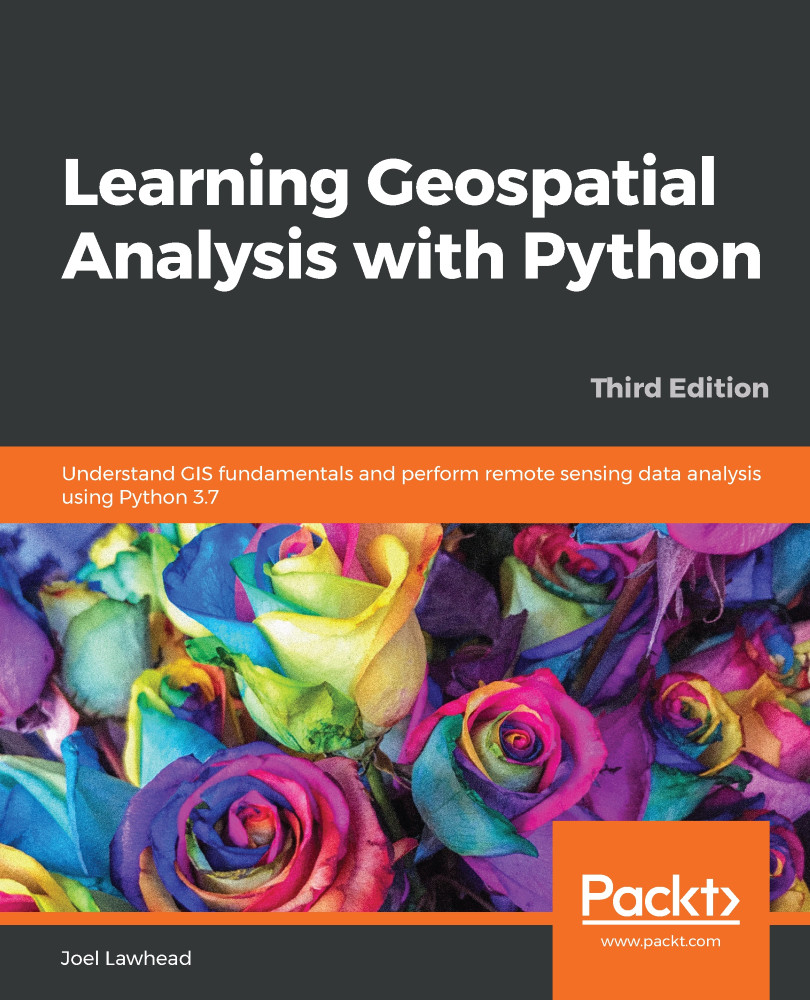Despite having dozens of formats, geospatial data has some common traits. Understanding these traits can help you approach and understand unfamiliar data formats by identifying the ingredients common to nearly all spatial data. The structure of a given data format is usually driven by its intended use.
Some data is optimized for efficient storage or compression, some is optimized for efficient access, some is designed to be lightweight and readable (web formats), while other data formats seek to contain as many different data types as possible.
Interestingly, some of the most popular formats today are also some of the simplest and even lack features found in more capable and sophisticated formats. Ease of use is extremely important to geospatial analysts because so much time is spent integrating data into geographic information systems, as well as...



